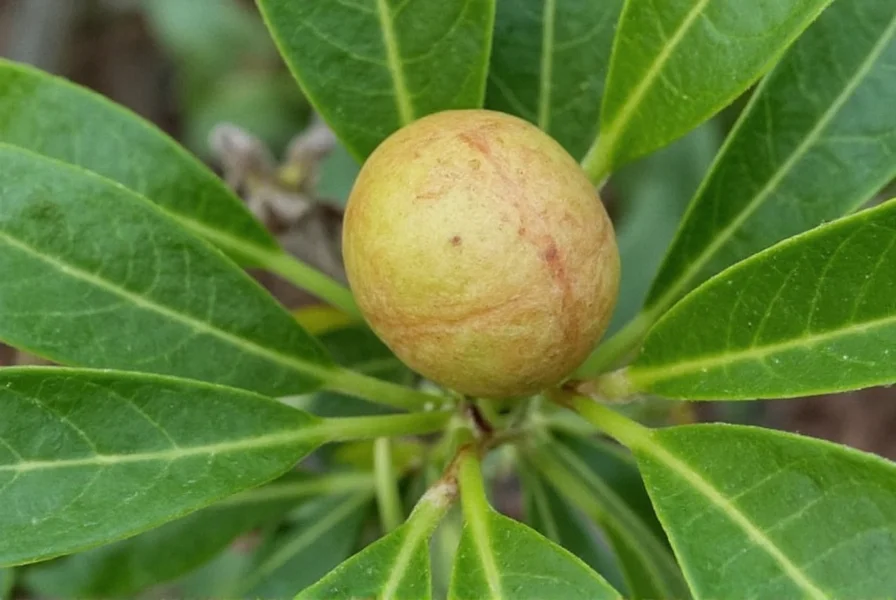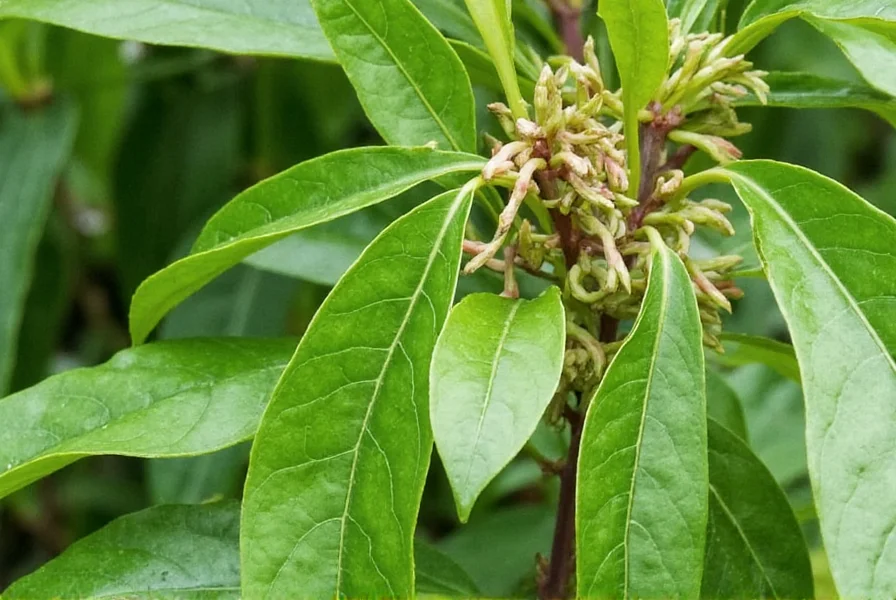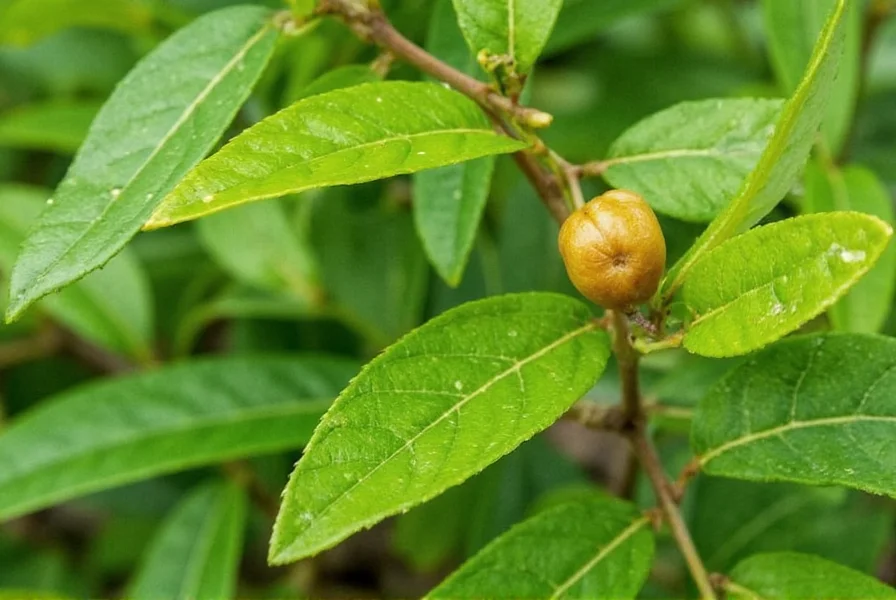The nutmeg plant, scientifically known as Myristica fragrans, represents one of the most historically significant spice-bearing trees in the world. Originating from the Maluku Islands of Indonesia, this dioecious tree requires both male and female plants to produce fruit, making proper identification crucial for cultivation. Unlike common misconceptions, nutmeg isn't just a kitchen spice but comes from a complex botanical source with specific growing requirements that many gardening enthusiasts find challenging to replicate outside tropical zones.

Botanical Characteristics of Myristica fragrans
Nutmeg trees belong to the Myristicaceae family and display several distinctive features that help identify them. These evergreen trees typically grow 10-20 meters tall with a pyramidal shape when young, developing a more rounded canopy as they mature. The leaves are elliptical, leathery, and glossy green, measuring 5-12 cm in length with prominent yellow veins. During flowering season, the trees produce small, yellow, bell-shaped flowers that grow in clusters along the branches.
One of the most fascinating aspects of the nutmeg plant is its fruit development. The tree produces peach-like fruits approximately 5-7 cm in diameter that turn yellow when ripe. As the fruit matures, it splits open along a natural seam to reveal the crimson-colored aril (mace) surrounding the brown, oval seed (nutmeg). This dual-spice production from a single fruit makes Myristica fragrans unique among spice plants.
Natural Habitat and Climate Requirements
Understanding the native environment of the nutmeg plant is essential for successful cultivation. In the wild, nutmeg trees thrive in the humid tropical rainforests of the Banda Islands, where they grow under partial canopy cover. These conditions translate to specific requirements for cultivation elsewhere:
| Growing Requirement | Optimal Conditions | Minimum Tolerance |
|---|---|---|
| Temperature | 20-30°C (68-86°F) | 15°C (59°F) |
| Humidity | 70-90% | 60% |
| Rainfall | 1,500-3,000 mm annually | 1,000 mm annually |
| Soil pH | 5.5-6.5 | 5.0-7.0 |
Nutmeg trees cannot tolerate frost or temperatures below 15°C (59°F), which explains why they're rarely grown successfully outside USDA zones 10-12. The trees prefer deep, well-draining soils rich in organic matter, ideally with some clay content to retain moisture without becoming waterlogged. While young trees benefit from partial shade, mature nutmeg plants require full sun for optimal fruit production.
The Nutmeg-Mace Relationship Explained
Many people don't realize that both nutmeg and mace come from the same fruit of the Myristica fragrans tree. When the fruit ripens and splits open, the bright red aril (mace) surrounds the brown seed (nutmeg). Harvesters carefully remove the mace, which is then dried separately from the seed. The mace has a more delicate, slightly sweeter flavor than nutmeg and is often used in lighter-colored dishes where the darker nutmeg might discolor the food.
The processing of both spices requires careful attention. Mace must be dried quickly to preserve its color and flavor, while nutmeg seeds undergo a more extended drying process that can take 6-8 weeks. During this time, the seeds shrink from the hard shell, allowing them to be removed and further processed. This intricate relationship between the two spices makes understanding the nutmeg plant's biology essential for appreciating both culinary products.
Growing Nutmeg Plants Successfully
For those interested in growing nutmeg at home, several critical factors determine success. First, you'll need both male and female trees since nutmeg plants are dioecious. Identifying the sex of young plants is challenging, as they don't flower until 7-9 years old. Many growers propagate through grafting known female varieties onto rootstock to ensure fruit production.
Nutmeg tree care requirements include consistent moisture without waterlogging, regular applications of balanced fertilizer, and protection from strong winds. The trees develop shallow root systems, making mulching essential to maintain soil moisture and temperature. Patience is crucial, as nutmeg trees typically don't produce significant fruit until they're 9-12 years old, with peak production occurring between 20-40 years of age.

Safety Considerations and Proper Usage
While nutmeg is safe as a culinary spice in normal quantities, the raw nutmeg plant contains myristicin, which can be toxic in large doses. Consuming more than 1-2 teaspoons of ground nutmeg can cause unpleasant side effects including dizziness, nausea, and in extreme cases, hallucinations. This nutmeg plant toxicity concern is particularly important for households with children or pets.
When using fresh nutmeg from your own tree, proper drying is essential for both flavor development and safety. Fresh seeds contain higher moisture content and potentially higher concentrations of volatile compounds. The traditional sun-drying process not only concentrates the flavor but also reduces potentially harmful compounds to safe levels. Always store dried nutmeg in an airtight container away from light to preserve its aromatic compounds.
Common Challenges in Nutmeg Cultivation
Gardeners attempting nutmeg plant cultivation outside tropical regions often face several challenges. Root rot from overwatering represents the most common problem, especially in container-grown plants. Nutmeg trees also suffer from several fungal diseases including damping-off in seedlings and various leaf spot diseases in mature plants.
Pests such as aphids, mealybugs, and spider mites can infest nutmeg trees, particularly when grown indoors or in protected environments. Organic pest control methods work best, as chemical pesticides can affect the quality of the spice. For those attempting to grow nutmeg in non-tropical climates, maintaining proper humidity levels while avoiding fungal issues presents the greatest challenge.
Conclusion
The nutmeg plant represents a fascinating intersection of botany, history, and culinary tradition. Understanding the specific tropical nutmeg tree characteristics helps explain why this spice remained so valuable and difficult to cultivate outside its native region for centuries. Whether you're a gardener attempting to grow nutmeg in a suitable climate or simply curious about the source of this common spice, appreciating the complexity of Myristica fragrans enhances your understanding of one of the world's most historically significant spices.











 浙公网安备
33010002000092号
浙公网安备
33010002000092号 浙B2-20120091-4
浙B2-20120091-4